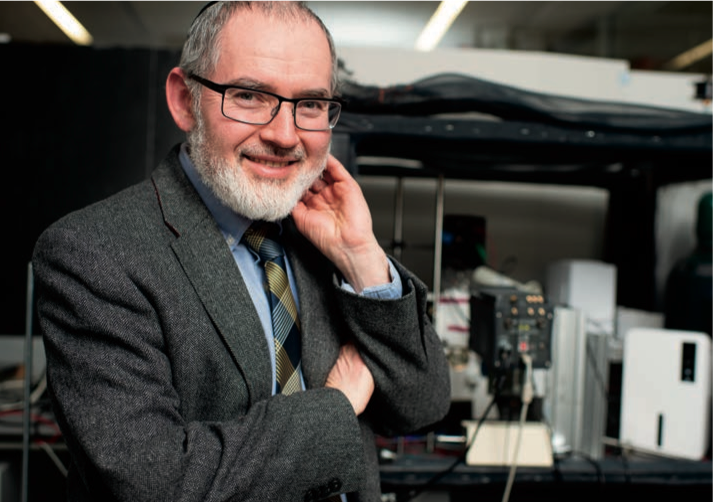Dr. Michael Keidar: Tailor-Made

Dr. Michael Keidar studies plasma engineering. He’s already had a good deal of success developing plasma propulsion technologies, but when he saw opportunities a decade ago to use plasma in biomedical applications, he embarked on a new and very fruitful research direction.
Typically plasma has a very high temperature—tens of thousands of degrees and higher—but cold plasma can be produced even at room temperature, and this lower temperature allows cold plasma to be directly applied to cells and tissues. As Dr. Keidar and his team began working with cold plasma and looking at its interaction with cells, they discovered that very short duration plasma application leads to a reduction of cell migration or spreading. And that’s when they made a significant breakthrough.
“We thought at that time that cold plasma might be useful for preventing metastasis or propagation of the cancer cells,” Dr. Keidar recalls, “so we started to treat cancer cells and we found that the plasma treatment is extremely selective toward the cancer cells. It kills them, and it spares the normal cells. It doesn’t do damage to normal cells.”
Following their discovery and their success in establishing the idea of adaptive plasma, his team began seeking an understanding of why plasma is selective in its interactions with cancer cells. Since every cancer cell is different and every patient has a different genomic composition, predicting the recipe for the chemistry that will be necessary in every case is very difficult, according to Dr. Keidar.
“The uniqueness of plasma is that the chemistry can be tailored simply by changing some of the plasma parameters; therefore, plasma can be viewed as a kind of drug that can be tailored on the fly to a specific goal,” he says. “So our focus is now on how to couple the plasma treatment with monitoring a real time response from cells and the tissue so we can create optimal outcomes.”
To achieve these optimal outcomes, Dr. Keidar hopes to build adaptive plasma platforms that involve a very efficient control system through a feedback mechanism. For this, he’s working with his department colleague, Dr. Taeyoung Lee, who is an expert on controls. He’s not stopping there, however. What is even more intriguing to him, and much more advanced, is the fact that the plasma can self-organize in the presence of different cells.
“We discovered that the plasma organized differently near the cancer cells and near the normal cells, so by guiding this process we can potentially create self-adaptive plasma therapy where we will not need a complicated feedback mechanism, but we will let the plasma adjust itself and target only cancer cells. That’s my research highlight these days,” he says modestly.

